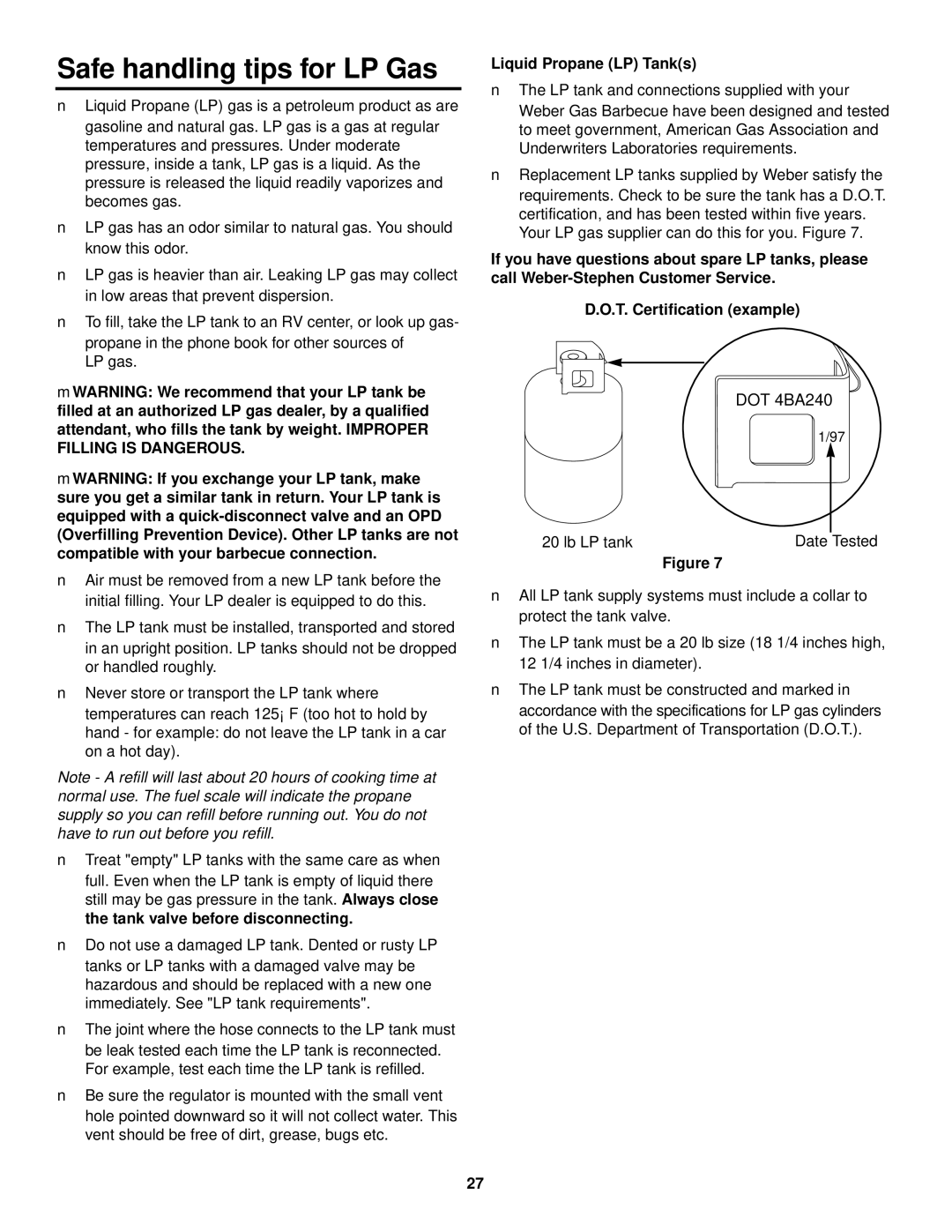2000 LX specifications
The Weber 2000 LX is a modern gas grill that epitomizes outdoor cooking excellence and functionality. First introduced by Weber, a renowned brand in barbeque equipment, this grill has gained popularity among enthusiasts for its impressive performance, versatility, and user-friendly design.One of the standout features of the Weber 2000 LX is its dual burner system which provides even heat distribution across the cooking surface. Equipped with a total cooking area of 280 square inches, it offers ample space for grilling a variety of foods simultaneously. The grill's burners reach high temperatures quickly, ensuring that steaks, vegetables, and other meals can be seared to perfection in a fraction of the time compared to traditional charcoal grills.
The technology behind the Weber 2000 LX also includes a porcelain-enameled cast iron cooking grates that retain heat exceptionally well and provide excellent heat retention for perfect searing. These grates are easy to clean, helping maintain the grill's performance over time. Additionally, the grill features a removable grease tray, which simplifies cleanup after cooking.
In terms of characteristics, the Weber 2000 LX is designed for convenience and durability. Its sturdy construction incorporates high-quality materials that protect against weather elements, ensuring longevity. The grill also comes with integrated fold-down side tables, providing extra workspace for food preparation or resting utensils.
One of the notable technological advancements in the Weber 2000 LX is its electronic ignition system. This feature allows for quick start-ups with just the push of a button, eliminating the common frustrations associated with manual ignition methods. Safety is also a priority; the grill includes a built-in lid thermometer, allowing users to monitor internal cooking temperatures without lifting the lid.
Moreover, the Weber 2000 LX is designed with portability in mind, making it ideal for those who enjoy grilling on the go. With its compact size and sturdy wheels, this grill can easily be transported to tailgates, camping trips, or beach outings.
In summary, the Weber 2000 LX combines superior cooking performance with user-friendly features, making it an ideal choice for both amateur and seasoned grillers alike. Its robust design, innovative technologies, and practical features create a quintessential outdoor grilling experience that satisfies every culinary enthusiast.

